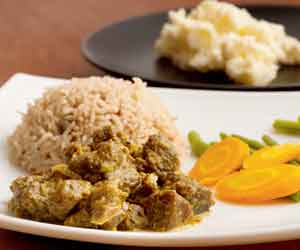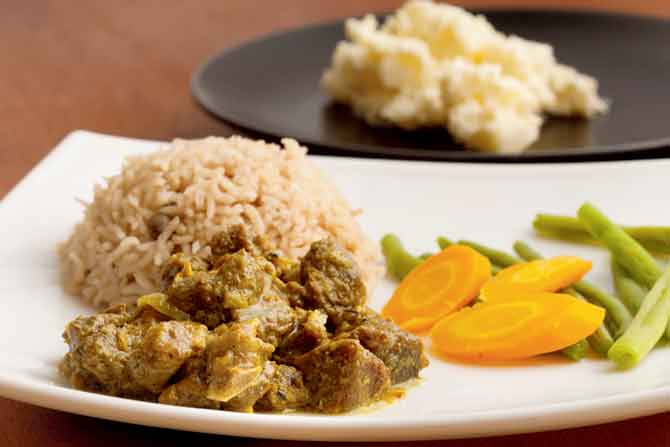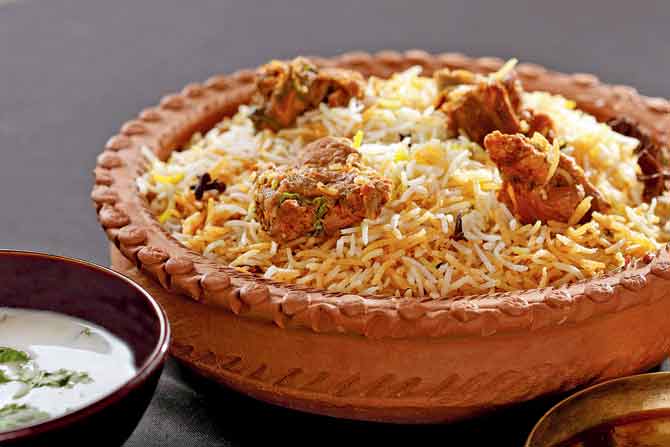In a fiction title peppered with recipes, US-based Pakistani writer Bisma Tirmizi revisits her favourite dishes from the subcontinent through a journey of self-discovery of a young, obese girl

Pakistani writer revisits her favourite dishes through journey of a young, obese girl
Each spice has a name like you and me. Each one has a different flavour, like you and me. Each one has a purpose, like you and me. Each one is distinct, and passionately and lovingly changes the flavour of bland rice to the elegant pulao, or the deliciously fiery biryani. Respect spice." The words as narrated by the cousin of Ayesha, the protagonist of US-based Pakistani author Bisma Tirmizi's new novel, Feast: With A Taste of Amir Khusro (Rupa Publications), could be a fitting tribute to the often, underrated ingredient in the subcontinent's cuisine.
ADVERTISEMENT
But, then almost every element of food from the region — right from what's involved in cooking and serving to eating — has always intrigued Tirmizi. "Even when I wasn't eating, I understood and respected what food had to offer; in terms of taste, familial bonds of sharing, and the romance and sensuality of it all," says the Las Vegas-based writer. It's this love for food that finds way into her new novel, which tells the story of Karachi-based Ayesha, a young girl battling obesity, and how she discovers herself through her explorations in food. "I see them [young girls struggling with weight] everywhere, their insecurities and need for acceptance in a world, where physical appearance reigns supreme. I, too, was an overweight 13-year-old, and know the feeling well," says Tirmizi.
What makes Ayesha's journey unique is its expanse. It isn't restricted to her home city, but takes us into the heartland of Pakistan's Punjab and even India, which enjoy a shared love for sarson ka saag, gajar ka halwa, khichri and pakoras. Another interesting aspect about Tirmizi's narrative is how it shifts from the present to an imagined past, taking us back to the Mughal Dynasty and back again, erasing lines that define time and space. Laced with mouth-watering recipes, the book also stands out as interesting document of a culture. "Food brings with it nostalgia, passing of the baton from one generation to the next, and it travels with us. Hence, the stories surrounding it are as, if not more, elemental and magical, as the ingredients in a recipe," says Tirmizi.
Namkeen gosht
This dish is deliciously rustic and hearty. It is traditionally made with small cubes of lamb or goat cooked in ginger, salt, black pepper and/or green chillies, and preferably animal fat. The fresh meat provides the fat base for the cooking, and it is most delicious when served with a side of hot naan, lemon wedges and sliced onions.

Namkeen gosht
Method
Heat oil in heavy-lidded wok. Fry green chillies and ginger for a minute, add meat, salt, tomato and black pepper, and stir on high heat for a few minutes until the heat causes the meat to release juices. Seal pot with lid and simmer on low to medium heat for a few minutes, turning the heat to low and cook until meat is tender and falling off the bone. The meat juices gradually steam and evaporate, sealing in the juices, and slow cooking the meat to perfection. Avoid adding water if possible, but if need arises add a little water to the cooking process. Serve with naan, lemon wedges and sliced onions.
Ingredients
2 lb goat leg, cut in small cubes
1 ½ to 2 tbsp freshly chopped ginger
½ to 1 freshly diced tomato
4 to 5 green chillies slit lengthwise (optional, but preferable, this gives it a real kick)
Salt to taste
Oil ¼ to ½ cup, but with freshly slaughtered meat the animal fat should suffice
Sindhi biryani
The yogurt used in most biryanis is sweet, but the Sindhi biryani requires that it is khatta. Red and green chillies, and whole garam masala are used generously.

Sindhi biryani
Method
For the masala: Heat oil and fry sliced onions until golden brown and set aside 3 tbsp to be used later as garnish. To the remaining oil and onions, add the chopped ginger and garlic, tomatoes, prunes, salt, red chilli powder, bay leaves, cumin and whole garam masala. Fry for 5 to 10 minutes on high heat, stirring constantly, adding yogurt, meat and water as required. Once meat is three-fourths done, add peeled potatoes. Cook for 14 to 20 minutes or until meat and potatoes are tender, adding the greens and stirring on high heat. The biryani masala is ready. Set it aside.

For the rice: In a separate pot boil water, adding whole garam masala (4 cinnamon sticks, 3 black cardamom pods, ¼ tsp black peppercorns, ¼ tsp cloves) and bay leaves. Once water comes to a boil add pre-soaked rice, cooking it till tender crisp, since we cook the rice completely in the dum phase. Drain, layer the pot with rice, top with a layer of biryani masala, adding a second layer of rice. Top with fried onions, sprinkle food colouring, sliced tomatoes, cilantro, mint and green chillies. Seal pot with foil and lid. Cook at full heat for 5 minutes, and medium to low heat for 15 minutes, to complete the dum. Serve after 10 minutes.
Ingredients
For the masala:
3 lb mutton (leg meat)
3 mugs basmati rice
5 medium potatoes, cut in half
8 oz to 12 oz oil
2 large onions, sliced
4 tsp freshly chopped garlic
5 to 6 medium sized tomatoes
12 to 14 prunes
Salt to taste
3 to 4 tsp red chilli powder
2 teaspoons cumin seeds
Whole garam masala (12 to 14 cloves, 12 to 14 peppercorns, 2 cinnamon sticks, 5 black cardamom pods, 10 green cardamom pods)
4 to 6 bay leaves
6 oz to 8 oz sour yogurt
6 to 8 green chillies
½ bunch coriander leaves
10 to 12 mint leaves
Orange food colour (a pinch)
8 oz to 16 oz water
To be added to boiling rice:
Salt to taste
4 bay leaves
Whole garam masala (4 cinnamon sticks, 3 black cardamom pods, ¼ tsp black peppercorns, ¼ tsp cloves)
Catch up on all the latest Mumbai news, current affairs from Mumbai, local news, crime news and breaking headlines here
 Subscribe today by clicking the link and stay updated with the latest news!" Click here!
Subscribe today by clicking the link and stay updated with the latest news!" Click here!







